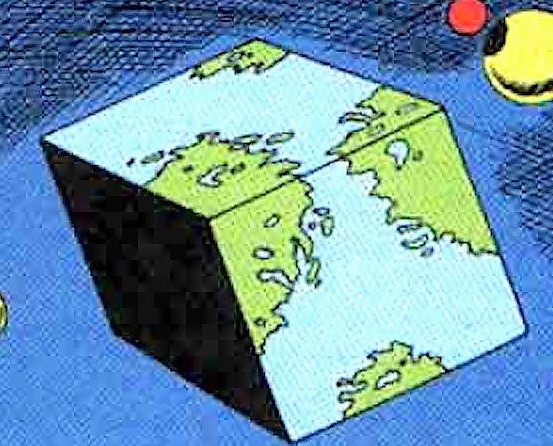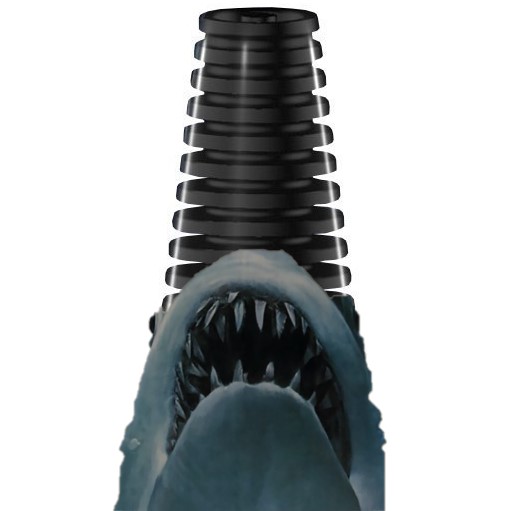So i tried to connect steamdeck to pc using usb and i read its immpossible because steamdeck is a computer and some explanation on quora about strong master slave relationship. But then why is it possible for android phones to connect to pc whilist also having the ability to use USB and other usb c accesories. Also why cant it be a toggle? So that you can change whetewer this usb( or device ) is reciving data ot sending data .
With usb-c you should be able to load a driver that allows network connectivity regardless oft otg mode. Or was it Thunderbolt?
Details: https://superuser.com/a/1784608
This might help ya:
Not sure if that’ll work for SteamDeck-to-LinuxPC connection, but I’m certain that works for SteamDeck-to-Android. Worth a shot at least.
I’ve used it about 2 months ago, back then it worked flawlessly. I don’t have my deck on hand rn, but I will test it when I get back.
It’s should definitely work then. MTP usually doesn’t leverage USB Gadget, but this one seems to.
The mobile device / “mtp Server” requires the gadget mode as far as I know. The PC /client does not need it.
Google “connecting 2 computers with USB”
If you have two PCs with USB ports, you can connect them to one another using a special type of USB cable called a “bridging” cable. You can also technically connect two Macs via USB, but you’ll need to add a USB-to-Ethernet adapter and Ethernet cable to the mix.
There are also articles about it:
https://hardwaresecrets.com/connecting-two-pcs-using-a-usb-usb-cable/This is perfectly supported in Thunderbolt, USB 4, and optionally available in USB since USB OTG was introduced.
Many computers don’t bother to implement more than USB 3 in host-only mode, that’s why connecting PCs is hard. Modern hardware and hardware with better support (phones and such!) work in multiple modes.
Has this changed with USB-C?
Possibly. But from my research it seems to really depend.
the USB-C ports on the two PCs need to support USB OTG (On-The-Go) functionality, which allows the ports to dynamically switch between host and device modes. This is what enables the direct PC-to-PC communication over the USB-C connection.
Ethernet had this figured out almost 30 years ago with auto-negotiation. Last crossover cable I ever used was in 2004 for a customer’s old hub they didn’t want to replace. Yes, “hub”, not “switch”.
Not a fair comparison IMHO - Ethernet is designed to be a connection between two or more otherwise independent peers (on L2), while USB’s goal was to allow connecting simple peripheral devices to computers. There was never meant to be a situation where it’s unclear which side is the Host.
Also note that the bridging “cable” is literally just two USB devices, one for each computer (although they are both on the same chip, so there’s that), with some internal link to pass the data.
I found some directions that might help.
Enabling USB-C OTG Device Mode :
Ensure the Linux device has a USB-C port that supports OTG functionality.
In the device tree, set thedr_modeproperty of the USB OTG controller to “peripheral” or “otg” to enable device mode.
Configure the TUSB320 USB-C controller (or equivalent) to operate in UFP (Upstream Facing Port) mode, which allows the device to act as a USB peripheral.
Configuring USB Gadget Drivers :
Load the appropriate Linux USB gadget driver for the desired functionality, such asg_etherfor Ethernet over USB,g_serialfor a serial device, etc.
Manually configure the USB network interface, such as assigning an IP address tousb0.
Connecting to a Host :
Use a USB-C to USB-C or USB-C to USB-A cable to connect the Linux device in OTG device mode to a host PC.
The host PC should then detect the Linux device as a USB peripheral, allowing file transfer, network connectivity, or other functionality depending on the configured gadget driver.Because they’re both hosts, you need a host and a client iirc.
Most modern Intel chipsets support “Dual Role Device” (DRD) where they can act as host or client as needed.
You actually can connect a Steam Deck to another PC. Look for the DeckMTP plugin on Decky Loader.
MTP is the thing Android uses when you connect your phone to a PC. It should be possible to install on any PC. Don’t know about Windows but there’s probably a solution for that as well.
Don’t know what happens when both devices have it. I’d suspect that they would both be able to access each other’s drive.
MTP totally sucks though, it is a pain in the a**.
Would rather use Syncthing or localsend
Yeah, that’s why I don’t have it installed. Sftp is more than enough. But that’s not what OP was asking.
Oh yeach i specificaly asked this question due to frustraions in using warpinator. It constantly stopped. Probably because my network is horrible ( the usual case of a crap router provided by isp. And to add to the frustration its the T-Mobile odu idu unit so its also under double NAT alghtough that part shouldnt matter in sending files through local network ).
Because USB builds a tree, with the USB-controller as stem.
Crossover cable.
I still have one around just in case but wifi makes it unnecessarily these days.
Also, most modern ethernet port would cross-over automatically
Back in the days we had these things. But I doubt this would work with USB-C adapters and a Steam Deck.
You don’t need those, unlike most PCs with mediocre USB controllers, the Steam Deck can actually act as either a host or a gadget/client.
USB 4 and Thunderbolt 3 can also do bidirectional communication.
The cable you linked will work for other devices that don’t have modern USB and lack gadget mode support.
We can connect two computers over USB and we do it all the time. E.g. your phone and your PC. One or both of the computers needs to be able to act as a device. Most Android computers can switch between host and device depending on what’s plugged in. It all comes down to implementation.
Universal Serial Bus.
Serial communication between two hosts requires either robust auto negotiation or a crossover cable.
Usb doesn’t have good auto negotiation between two hosts so you gotta use a crossover cable.
But… there’s no guarantee that the computers usb controllers and operating systems will support it.
Would be nice to have a date on that statement in the product description. Seems to be outdated?
Oh no, they say right there that it will not let two computers connect to each other lol.
Most modern NICs will auto negotiate now so the cross over cable is no longer needed.
Yeah but like if instead of usb it was a db9 you’d need the tx and rx crossed over.
That was called a uh null modem back in the day
You can’t connect a steam deck to your PC?
You can connect your Steam Deck to your PC with USB, but all it’s going to do is charge it.
I think that the Deck is able to connect as a device (MTP or CDC?), but there has been trouble with that so the current OS disables it.
What are you trying to achieve? If your looking to transfer data I would use a Ethernet connection.
You will need to manually set the IP and netmask on each side. USB isn’t designed for what you are trying to do.
You would also need a type A to type B ethernet cable, AKA a crossover cable.
Without that you will need some sort of switch to act as an intermediary between the two devices.
I’m quite sure that all gigabit+ ethernet auto-negotiates. There is no shared ether, there are no dedicated tx/rx pairs anymore. It’s all point-to point and constantly negotiating to make the most of every wire it’s got.
Yeah I only learned about that in the comments down below. I was just going off what they taught me when I took my network+ what 3 years ago?
Ethernet being reconditioned to Auto negotiate crossover connections was not covered or if it was it was a blurb and I forgot it in the meantime.
Professional accreditation is such a racket lol. I’ve seen plenty of tax courses with “the last tax year that so-and-so was relevant was 1988, NEVERTHELESS this will be on the test.” Zero effort goes into updating the material, just keep on reselling the same crap to a captive audience forever.
I have taken the A+ certification on two separate occasions and the first time I walked in with no training and aced it. The second time I walked in with no training and I struggled but I still passed.
The CompTIA certifications do get updated on a roughly 3-year cycle, but even so they’re never going to cover everything and even if you can pass the test it doesn’t actually mean that you are a competent IT person.
Also goes in reverse. Here are probably a lot of good IT specialist whe wouldn’t pass any comptia test. Not because they are bad IT guys or don’t have the necessary skill/knowledge…
No… Just because CompTIA tests are worded in such a way that you actually doubt that every answer could actually be right and fit the question…
They are playing on words and even if you’re a the best IT guy in the world but lack the reading skills and English collocation of an perfect native Shakespeare writer, you’re going to fail ^^.
But that’s on purpose 🤑🤑🤑.
Well, that is just not true anymore and hasn’t been in a very long time. Probably everything made in the last 20 years has auto detection and doesn’t need a crossover ethernet cable. This was introduced as an optional feature sometime in the 100Base-T era and is required for gigabit ethernet.
Quora isn’t worth its weight in bits
Quora is the new Yahoo Answers, debate me.
What’s the new Quora?
The USB protocol was simple by design, so it could be implemented in small dumb devices like pen drives. More specifically, it used two couples of cables, one couple was for power and the other for data (four wires in total). Having a single half-duplex data line means you need some way of arbitrating who can send data at any time. The easiest way to do it is having a single machine that decides who gets to send data (master), and the easiest way to decide the master is to not do it and have the computer always do the master. This means you couldn’t connect two computers together because they would both try to be the master.
I used the past tense because you may have noticed that micro USB have 5 pins and not 4, that’s because phones are computers and they use the 5th pin to decide how to behave. If it’s grounded they act as a slave (the male micro to male A cable grounds it). If it has a resistor (the otg cable has it) it act as master. And if the devices are connected with a wire on that pin (on some special micro to micro) they negotiate the connection.
When they made usb 3.0 and they realized that not having the 5th wire on the usb-A was stupid, so they put it (along side some extra data lines) that’s why they have an odd number of wires. So with usb 3 you can connect computers together, but you need a special cable that uses the negotiation wire. Also I don’t know what software you need for it to work.
Usb-c is basically two USB 3.0 in the same cable, so you can probably connect computers with that. But often the port on the devices only uses one, so it might not be faster. Originally they put the pins for two connections so you could flip the connector, but later they realized they could use them to get double speed.
And it was a good design - it’s universal (aha) adoption proves that.
Those of us old enough to remember the pain of using 9 and 25 pin serial leads and having to manually set baud rate and protocols, along with LPT and external SCSI and manufacturer specific sockets probably agree this was a problem that needed solving, and USB did do that.
Thanks for the elaborate eli5
Great read. Thanks
In general, because what everyone thinks of when they say USB is a host-device protocol, and you’re trying to connect two hosts together.
But USB is a blanket term for a number of protocols, and there are protocols that allow a host to switch roles and become a device, depending on what it’s connected to.
If you see a PC being advertised with “dual role USB ports” or support for “USB-OTG”, then you can connect it to another PC. Otherwise, you almost certainly can’t.
If all you want to do is transfer files, you can use something like QuickDAV to transfer files over your local network.

















